- 02 9712 1736
- [email protected]
- 212 Great North Road, Five Dock, NSW 2046
- Open 7 days a week
This is question that has often been asked.
Foot pain can be due to tendonitis, however there are multiple other reasons that could lead to top of the foot pain.
We will go into more detail in this blog and answer all the questions about tendonitis, injured tendon treatment and how to prevent extensor tendonitis.
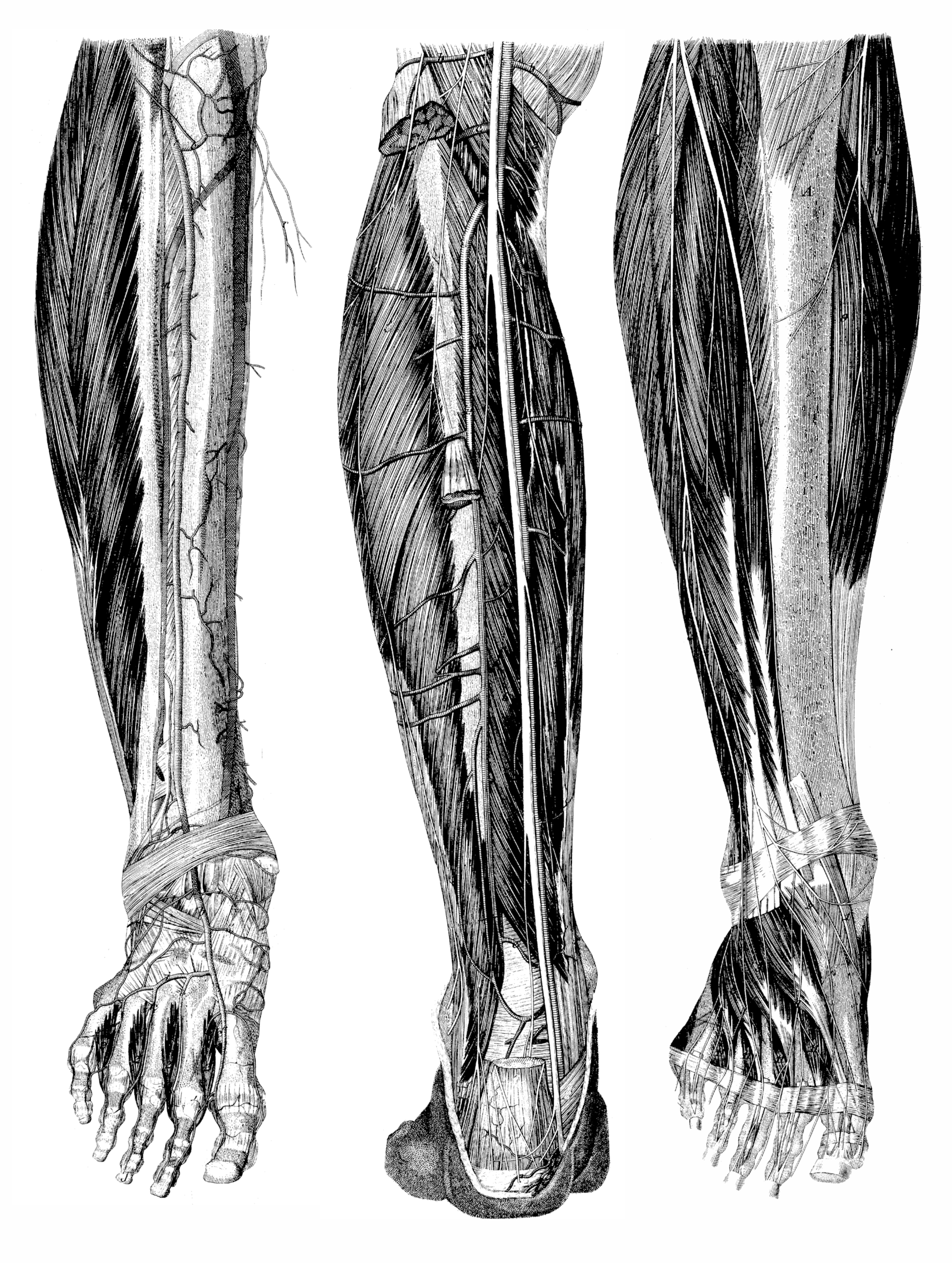
Anatomy of your lower leg
A group of seven short bones arranged in two rows in each foot forming the midfoot.
Five long bones in the forefoot that connect the tarsal bones in the midfoot to the five toes. The metatarsal bones are number 1 to 5, starting with the one closest to the inside edge of the foot.
These extensor muscles allow extension of the big toe (lifting the big toe off the floor while keeping the rest of the foot in contact with the floor) and dorsiflexion of the ankle (lifting the foot off the floor while keeping the heel in contact with the floor).
As the name suggest, the extensor hallucis longus is the longer of the two extensor muscles. The extensor hallucis longus muscle is located in the front of the leg along the shin bone, while the extensor hallucis brevis muscle is located on top of the foot.
These muscles then extend, forming extensor tendons, that attach to the big toe, thereby allowing movement, specifically extension, of the toe.
This extensor muscle allows extension of the toes (lifting the toes off the floor while keeping the rest of the foot in contact with the floor) and dorsiflexion of the ankle (lifting the foot off the floor while keeping the heel in contact with the floor).
The extensor digitorum longus muscle is located in the front of the leg along the shin bone. The muscle then extend, forming extensor tendons, that attach to the toes, thereby allowing movement, specifically extension, of the toes.
This extensor muscle allows dorsiflexion of the ankle (lifting the foot off the floor while keeping the heel in contact with the floor) and inversion of the ankle (lifting the inside edge of the foot off the floor so that only the outside edge of the foot is in contact with the floor).
The tibialis anterior muscle is located in the front of the leg along the shin bone. The muscle then extend, forming an extensor tendon, that attach to the inside edge of the foot at the base of the first metatarsal, thereby allowing movement, specifically inversion, of the foot.
A band-like ligament structure that holds the extensor tendons in place against the top of the foot. It allows smooth movement of the extensor tendon during toe extension.
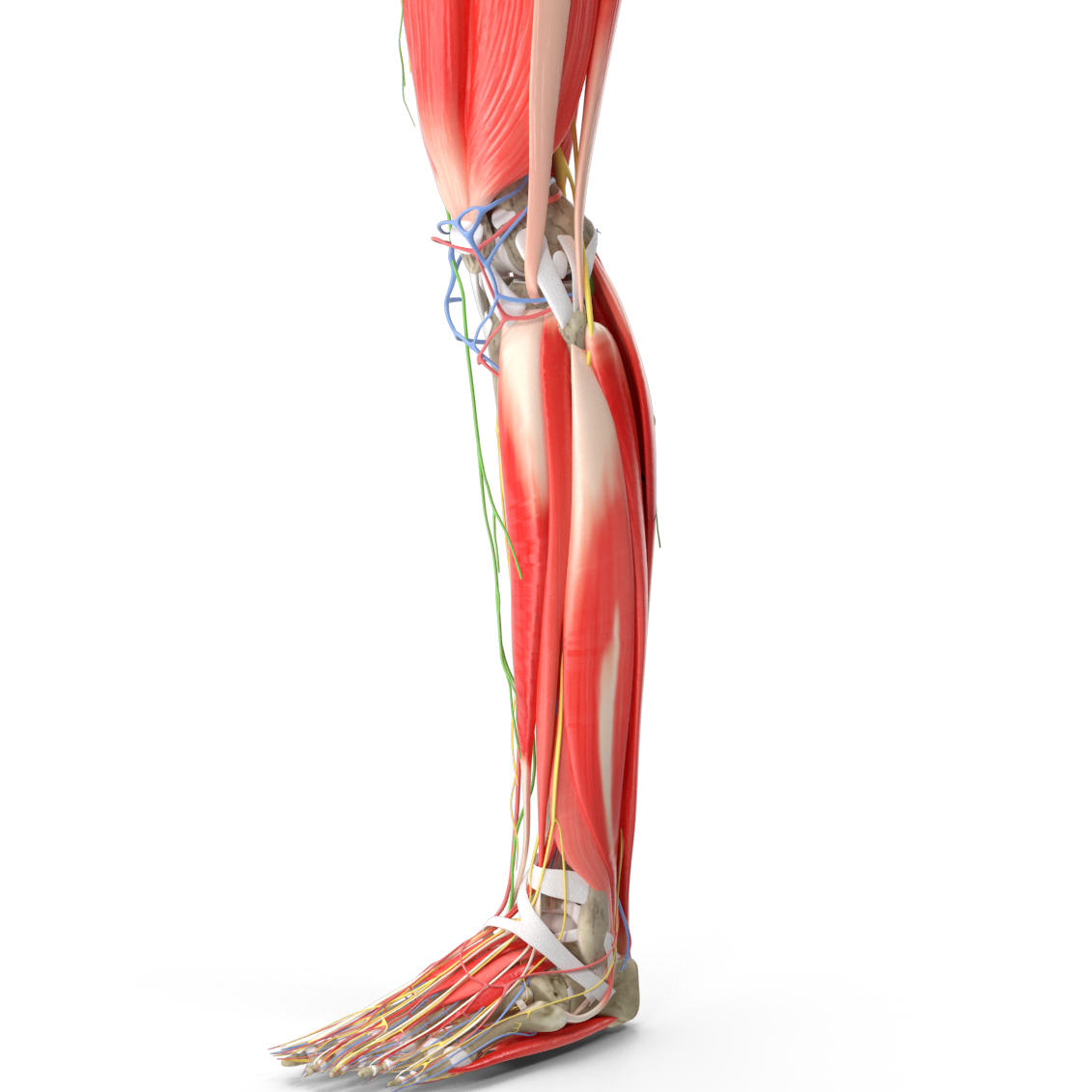
Inflammation of the tendons is called tendonitis. Extensor tendonitis or extensor tendinopathy refers to a condition characterised by tendonitis of the extensor tendons.
In the foot, extensor tendons are associated with the extensor muscles that are located in the front of the lower leg along the shin bone, that are responsible for toe extension (lifting your toes off the floor) and ankle dorsiflexion (lifting your foot off the floor).
Tendons connect muscles to bones to allow muscles to create movement. As such, when the extensor tendons become inflamed, activities that require mobility in the toes, such as walking and running become painful.
Aside from feeling pain over the top of your foot, other symptoms of extensor tendonitis include swelling, heat, and redness over the painful area.
The primary cause of extensor tendonitis is overuse or repetitive motion of the extensor muscles. This in turn results in irritation of the extensor tendons due to repetitive strain. In this case, you would experience similar symptoms to that of an injured hand with repetitive strain injury due overuse.
Another cause of extensor tendonitis is irritation or injury of the extensor tendon.
Irritation of the tendon may be a result of wearing shoes that are too small or tying your shoelaces too tightly which places a lot of pressure over the top of the foot.
An extensor tendon injury may be caused by running on uneven surfaces or other activities that involve excessive ankle dorsiflexion or sudden, forceful movements resulting in more strain on the tendon.
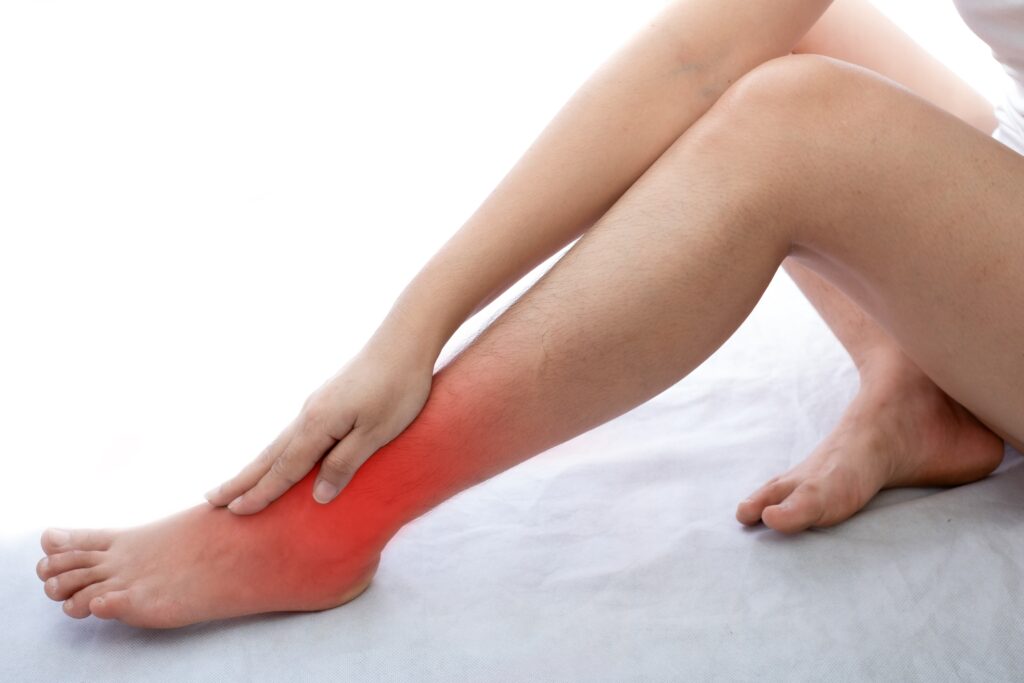
Ligament sprains occur due to sudden increase in stress on the ligaments due to sudden, forceful movements during activities that involve quick changes in direction or jumping. This results in overstretching or tearing of the ligaments.
The extensor retinaculum lies over the top of the foot and is a ligament that can often be sprained. Symptoms of extensor retinaculum sprain includes pain over the top of the foot, swelling, heat, and redness over the painful area.
A fracture in one of the metatarsal bones, can lead to pain on the top of the foot. This is typically a result of a trauma.
A stress fracture in the metatarsal bones can also result in similar symptoms. This is typically a result of overuse. Unlike a fracture, a stress fracture involves a smaller crack in the bone as opposed to a complete break in a bone.
Various types of degenerative and inflammatory arthritis, such as osteoarthritis and rheumatoid arthritis, may affect the joints of the foot, leading to pain and inflammation. Arthritis may be accompanied by aching pain and stiffness in the affected joints.
Compression of the nerves that run over the top of the foot may lead to tingling and numbness that also affect the toes. Compression may be a result of improper footwear, which could also result in inflamed tendons.
This is a condition where two or more tarsal bones in the midfoot become fused usually at birth. This results in an increased risk of developing pain and restricted mobility in the midfoot.
The first thing you will want to do if you are experiencing pain and other signs of inflammation over the top of your foot is to reduce pain and reduce swelling. Resting and icing (avoid ice burns) the affected foot and taking anti-inflammatory medications can help to reduce inflammation and manage these symptoms.
If you notice that improper footwear may be causing or aggravating your symptoms and causing numbness and tingling in your toes, either avoid tying your shoelaces too tightly, or look at replacing your footwear to reduce irritation.
You may notice extensor tendonitis symptoms that are being triggered or exacerbated by specific, repetitive physical activity, it may also be beneficial to avoid that physical activity and rest to allow for proper recovery.
If you are suspecting a ligament sprain or a fracture from trauma or excessive force from sudden, quick movement, a visit to the doctor is necessary to ensure your receive the proper attention.
It it important then to determine what is causing the symptoms you are experiencing. A visit to the doctor may provide you with an idea of what is causing the pain and a prescription for pain relievers to take away some of the pain, or a referral for steroid injections to take away inflammation.
You may be referred for imaging tests, such as a magnetic resonance imaging (MRI), to evaluate for possible injuries to different structures within the foot and to assess the health of your joints, if you are suspected of having arthritis or tarsal coalition.
You may then be referred to a physical therapist who will perform some physical examination to evaluate mobility in your foot and provide you with physical therapy to facilitate your recovery process. A physical exam allows your therapist to assess where you are at in your process of recovery and provide you with an individualised treatment plan.
Treatment during the early stages of recovery will involve managing pain and addressing any inflamed muscles, tendons, and joints. Your physical therapist will also provide you with recommendation for proper footwear and activity modification to avoid exacerbating your condition.
With reduction of pain and inflammation, treatment will then focus on improving strength and flexibility. Stretching and strengthening exercises will be provided for you to perform at home. It is important that you perform the these exercises that you have been provided with to ensure faster recovery.
Strengthening exercises will focus on building joint stability, while stretching exercises will improve your flexibility.
Recovery may take a few weeks depending on the extent of your injury and your ability to stick to the treatment plan.
Other treatments such as acupuncture may also be beneficial to treat extensor tendonitis.
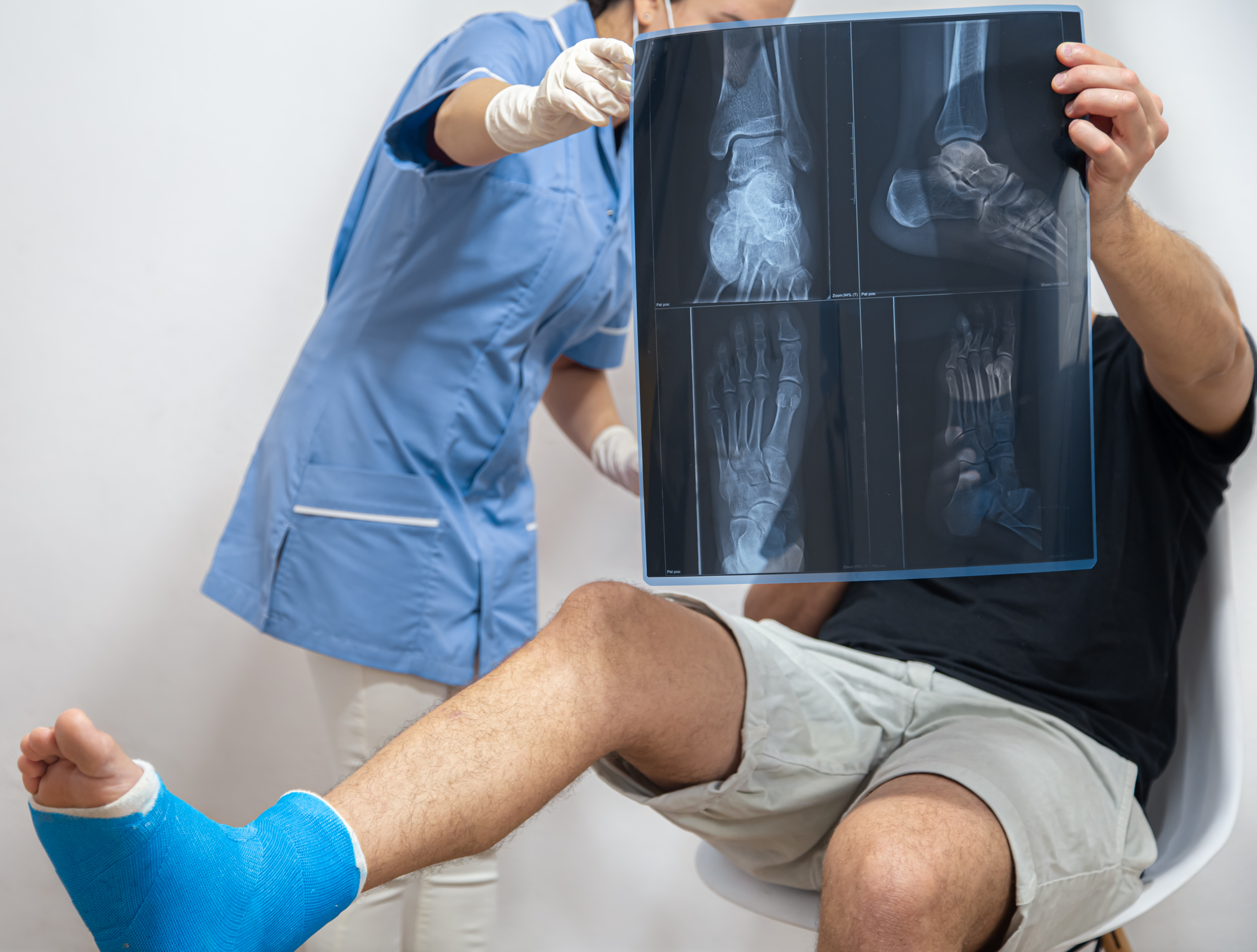

Extensor tendonitis is a common condition characterized by inflammation causing pain on the top of your foot. It is normally caused by excessive use of the extensor muscles. Seeking care to determine the cause of your extensor tendonitis is important to heal your current symptoms and prevent long-term extensor tendonitis. Long-term extensor tendonitis may decrease movement, resulting in other long-term health side effects. Manual therapy is your best approach to treating extensor tendonitis. To treat extensor muscles of the region massage and removal of the cause are your first step. This will be followed by a period of retraining to provide long-term relief.
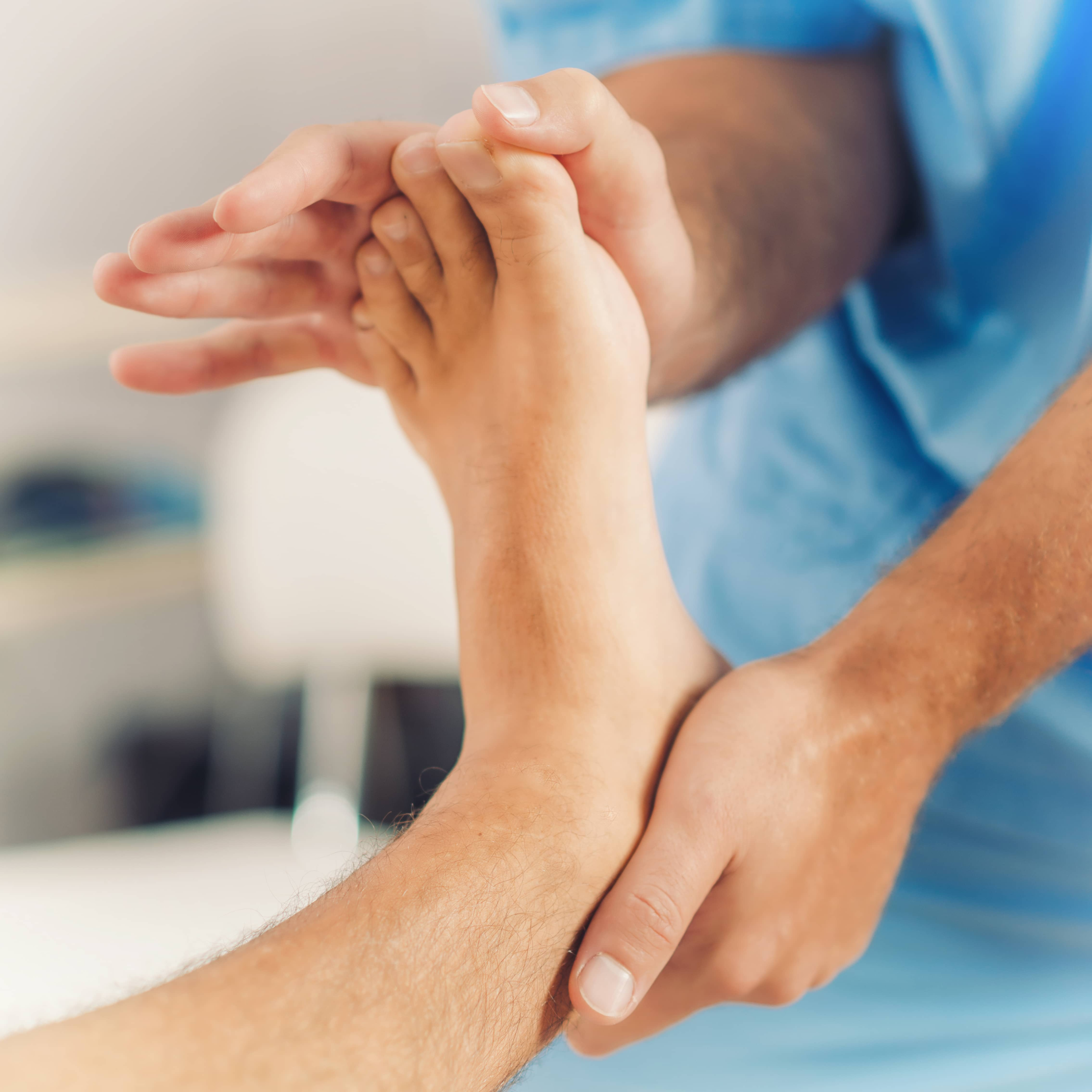
Manual therapy is the best approach for tendonitis
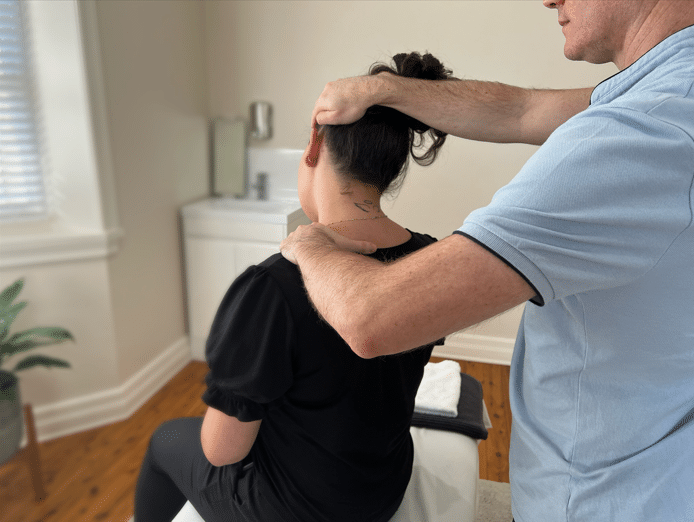
Five Dock Osteopathic and Chiropractic began as a local Burwood back pain clinic with expertise focused on Burwood back pain and general chiropractic care. Since taking the clinic over in 2002, Scott and his team have transformed the back pain clinic into a multi-disciplinary team focused on all neuromusculoskeletal health. These days if you have any issue you believe can be related to your muscle, joints or nervous system, then this is the team for you.
Scott and his team have developed treatment programs combining chiropractic, osteopathy, massage and exercises. Their approach is to look at your movement and how your brain is interpreting your movement. You experience symptoms such as pain, stiffness and inflammation when the information coming into your brain from your body is saying there is a problem. Your brain responds by giving you symptoms that will stop you from moving. More research shows the importance of remapping the brain and regulating the nervous system, when it comes to these types of problems. The team at Five Dock Osteo Chiro is at the leading edge of the best advances in care and will provide you with the gold standard of care. They are experts at moving you from pain relief to longer-term musculoskeletal health so you can focus on enjoying life.

About
Five Dock Osteopathic & Chiropractic is located in Canada Bay, in Sydney’s Inner West. Servicing suburbs including Burwood, Croydon, Drummoyne, Five Dock, Haberfield, Concord, Abbotsford, Chiswick, Leichhardt, Wareemba, Russell Lea, Summer Hill, Strathfield.
Clinic hours
Monday, Tuesday, Thursday 7AM – 7PM
Wednesday, Friday 7AM – 6PM
Saturday 7AM – 2PM
Sunday 8AM – 2PM
Contact details